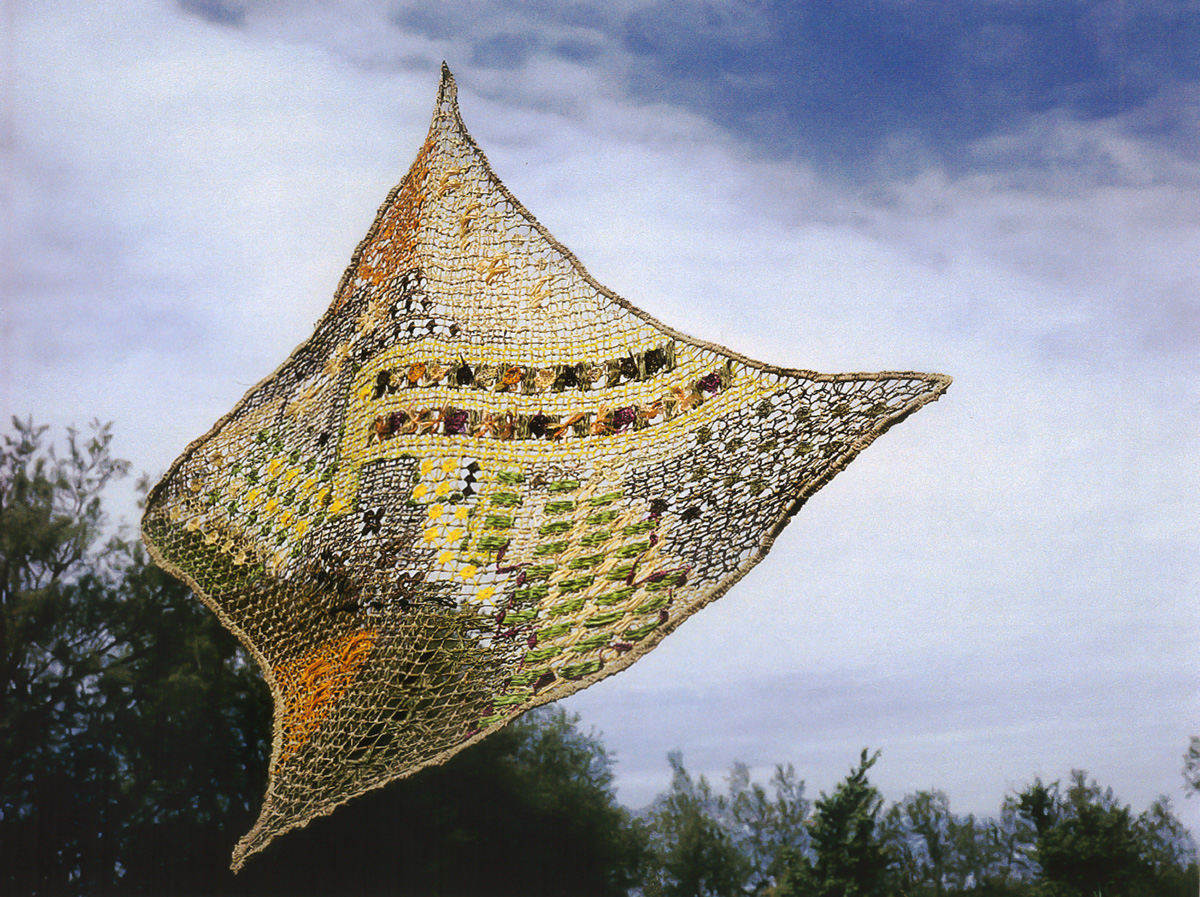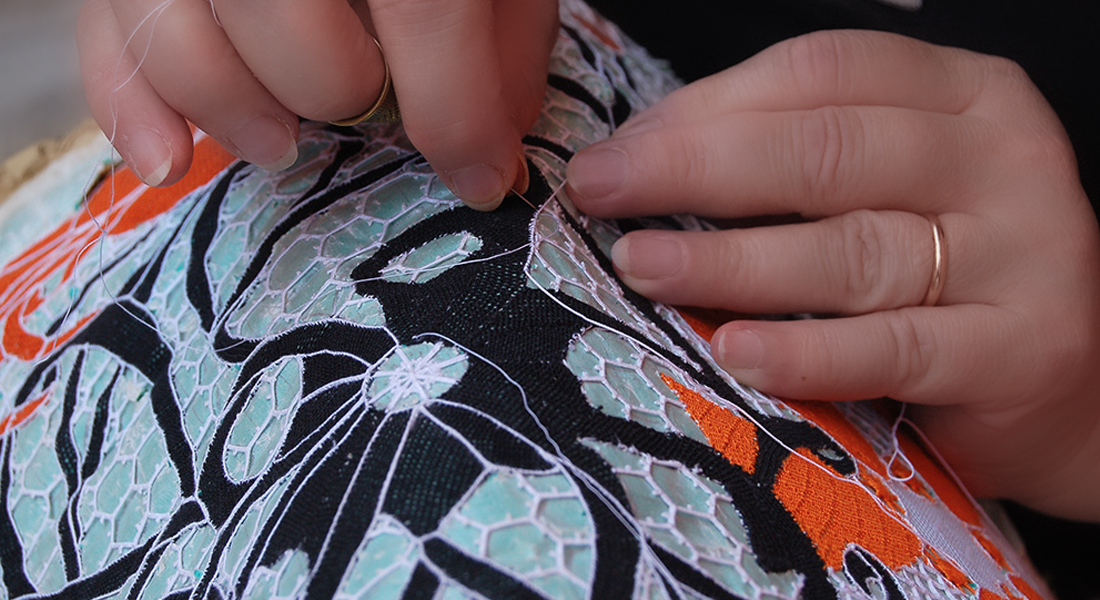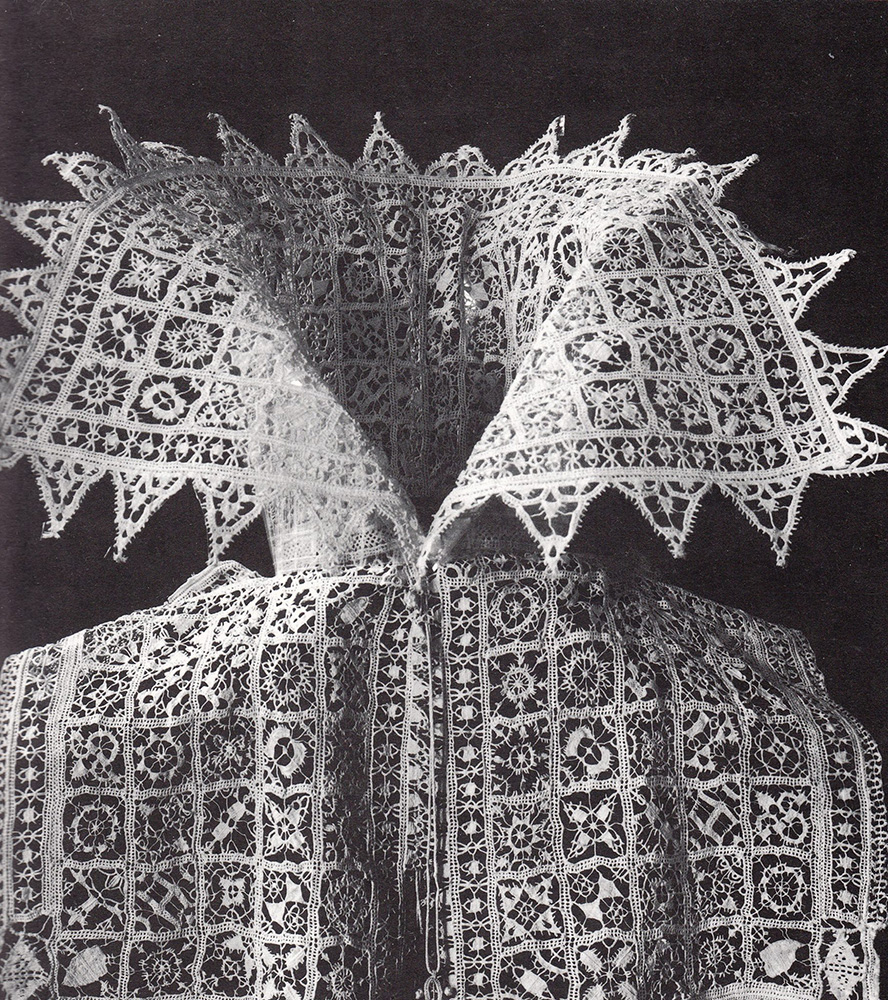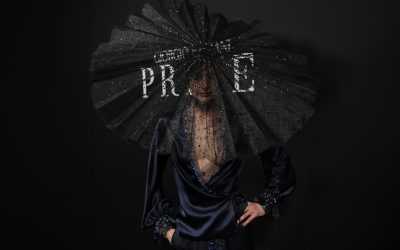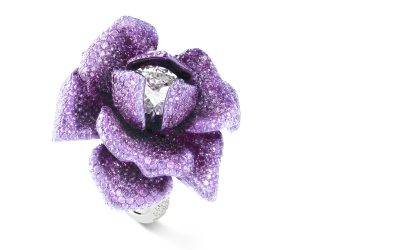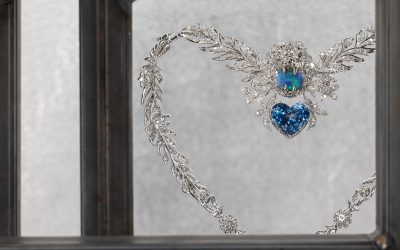Do you know the word Merletto? It can be translated by lace but it is a unique and ancient Burano knowhow that could easily be considered an appellation. As master artisan LUCIA CONSTANTINI is reminding us, this needle lace dressed all European Royal houses for centuries.
As many of these artisanal crafts, the Burano Merletto can found itself in danger. To precious, to time consuming, it is facing the massive lace productions invading the market. Lucia Constantini made her life work to keep it alive and promoting it’s unique beauty and history around the world.
Lucia Costantini Was born in Burano and made lace since she was a child, learning the old secrets of the needle art from the women in her family. Her mother was directing the Burano Lace School and taught also at the “Old Schools”, the smaller ateliers as “Jesurum” and “Olga Asta”. The embroidery pillow she is using belonged to her grandmother. Back then the “campiello” was full of life, you could see embroiderers working in every corner. The little girls were fascinated by the sound of the thimble on the paper as the needle slipped point by point to create that weft that came out of nowhere.
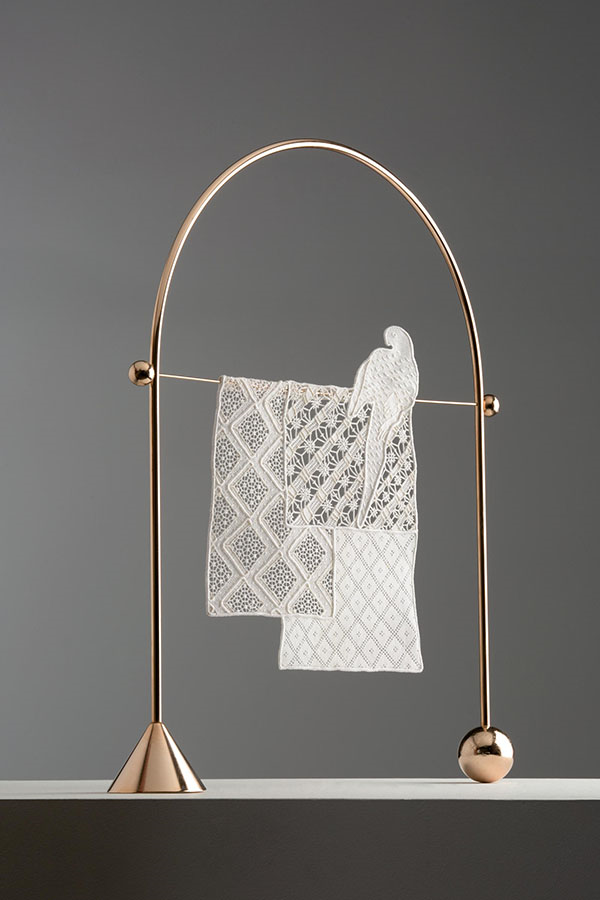
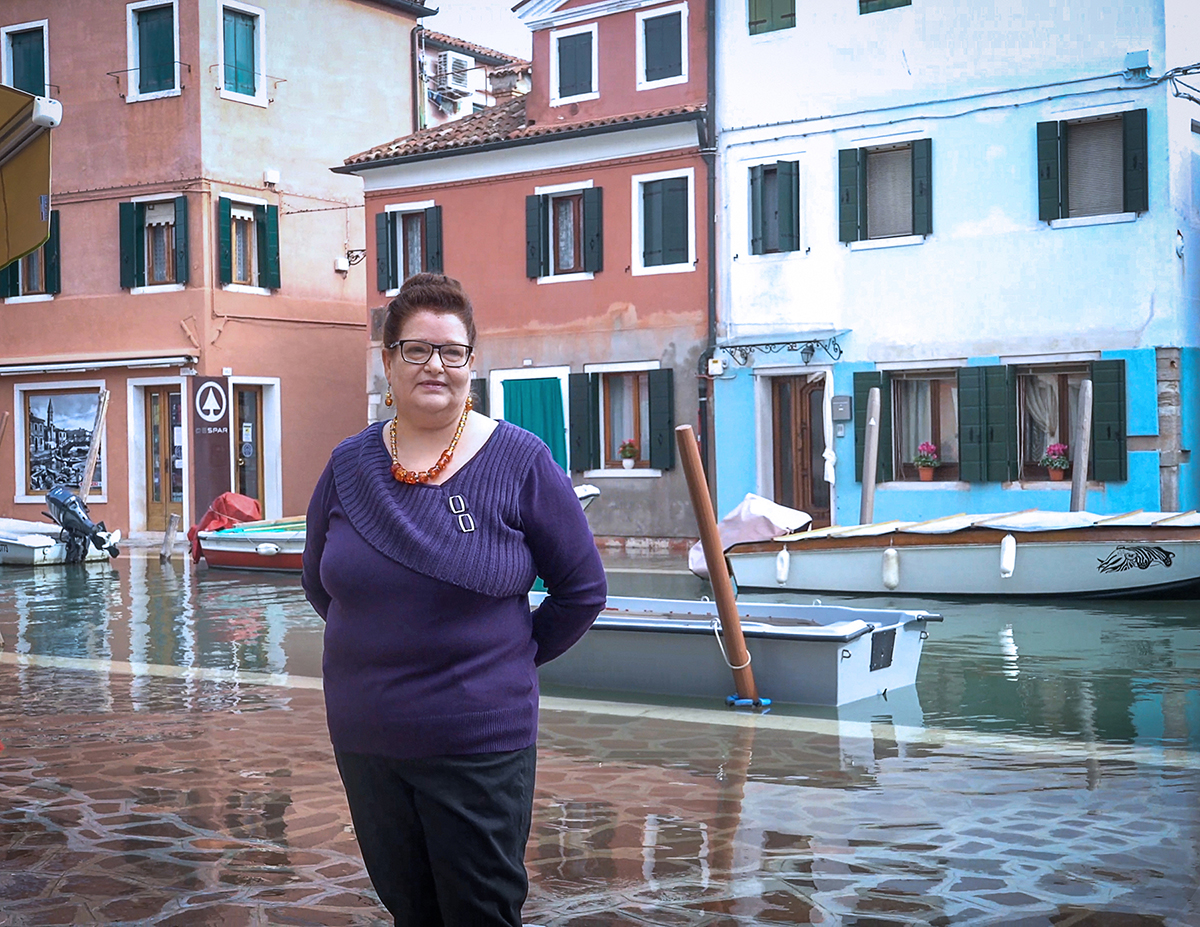
In 1984 she graduated the famous Burano Lace School, with a master in merletto stitches and design. With her acuity and sensitive artistic talent, Lucia developed her own designs and took the traditional ones towards new horizons. The whole Venice became her source of inspiration. Its boats and fishing nets, the gondolas, the rooftop gardens, the bell towers… a fluent vocabulary, poetics of figurative and even abstract, cubist and surrealistic works. Starting with 1985 many art shows, group or solos, brought Lucia al over Italy and Europe, Japan, Russia and the United States. She earned many honours and prices and directed experimental workshops, a to long list for us to cite.
In 1993 she was invited, together with Vima de Marchi Micheli*, by E.G.A. (Embroideries Guild of America) to teach the Burano knowhow in some of the most important Californian Universities, with thousands of associates from all American states. Later she held courses at the famous Gorizia Lace School (F.V.G.) and at the International Biennale of Sansepolcro, where she received both the gold and silver medals, testimony to the quality of her work. She also taught at the International Forum of lace and Embroidery in Rimini. She produced a permanent video demonstrating the different needle stitches for the Andriana Marcello Foundation where she is a full member. She was invited by the Ca’Foscari University of Venice o exhibit her works for Meeting the artist.
*Vima de Marchi, scholar who visited Italy for thirty years to discover its embroidery – she published A Venezian Lacemaker

Conferences & exhibitions – San Francisco: Museum of Modern Art / Honolulu: Art Institute / Sacramento: Museo Italo-American, Center For Textile Arts / Davis: Design Alliance/ Sacramento: Italia Club / Oakland :Mills College
Lucia was the first Italian lacemaker invited to the prestigious international Biennale of Contemporary Art in Bruxelles and one of the ten nominated to be personally honoured by HRH Queen Fabiola of Belgium. She participated, with 52 Italian and European artists in “project for a Europe” supported by Generali. Her design “Euro Regatta – A Venetian Carnival “ was showed at the Hermitage palace in Saint Petersburg, Russia. Many of her works are published in important review and books.
here some of her medals and acknowledgments, like the Leonardo Da Vinci Wings Award
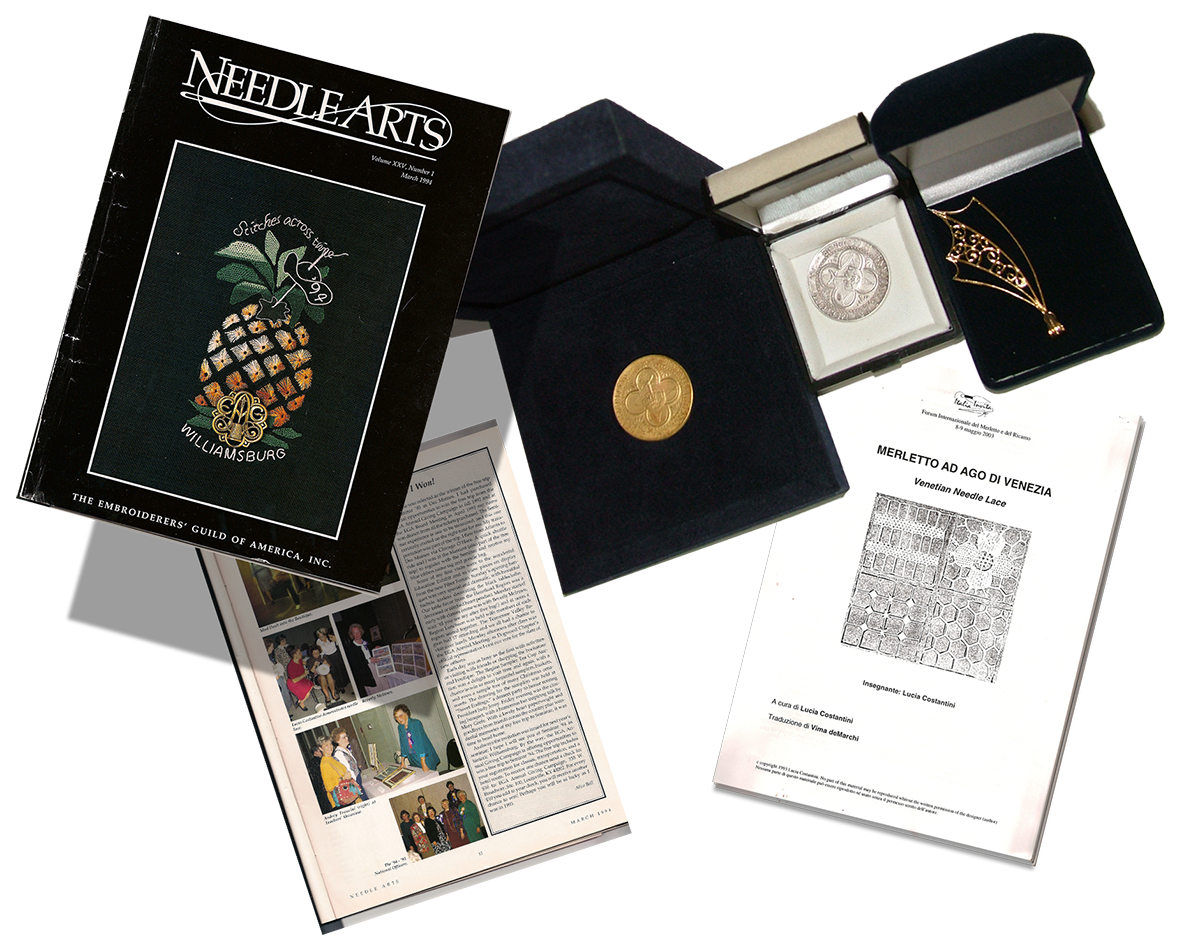
Lacemaker today: why?
“ The echo abroad encouraged me to challenge myself. I first reflected on my city, what and how it could be represented, considering its history and beauty. So I decided to use brass wire as it resembles the gold, symbol of power, sumptuousness and splendour of the Serenissima. This led me to study costume history. Great technical effort as the pieces were very large to be kept on the specially designed embroidery cushion, even the brass wire had to be of an adequate length and always in a circular position. Subsequently exhibited at the Max Berk Museum in Heidelberg and Dortmund in Germany, at the Palazzo Mocenigo Museum, at the Venezia Savings Bank, M9 in Mestre / VE and Vicenza oro in Vicenza.
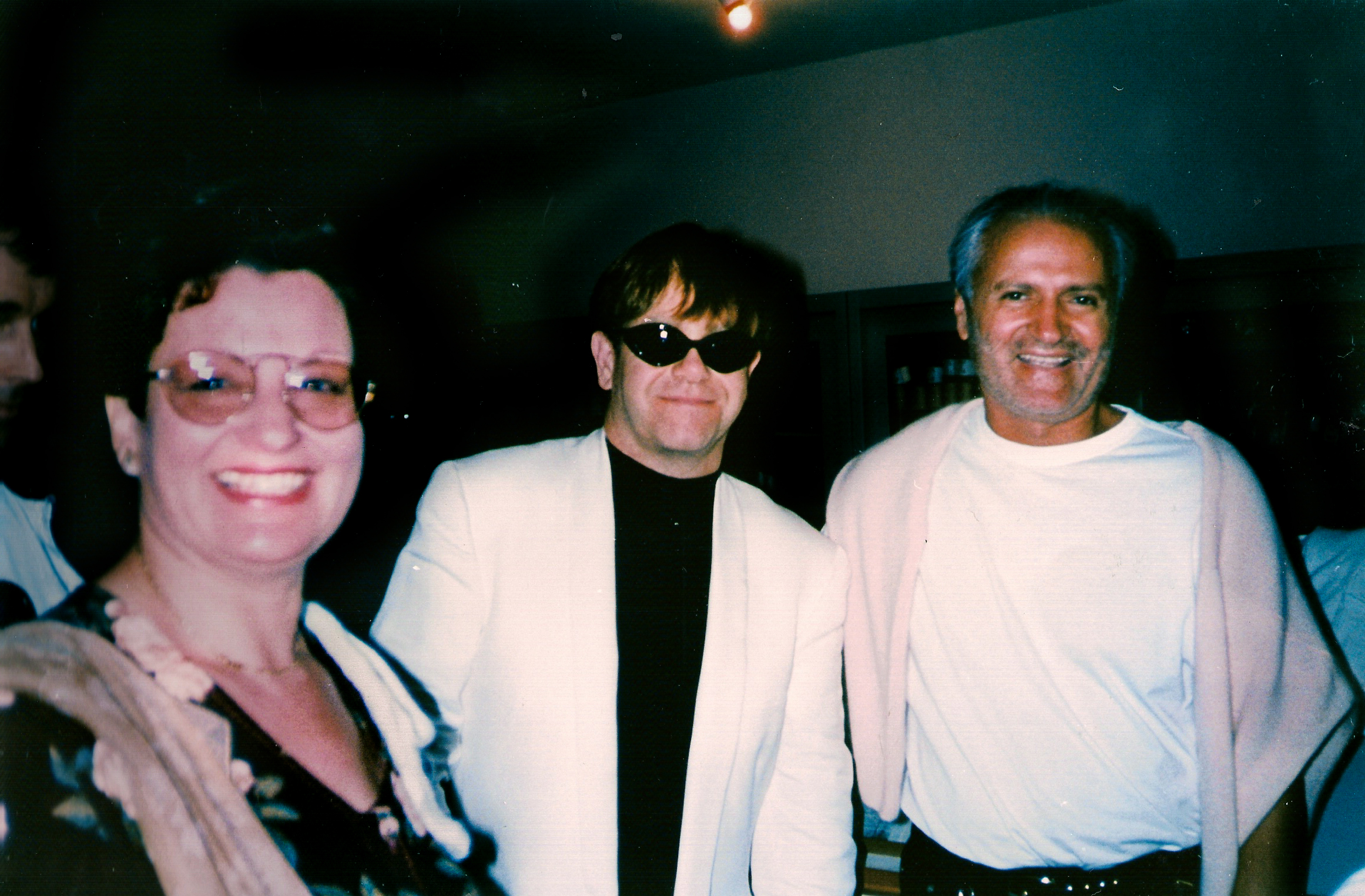
Lucia with sir Elton John and Gianni Versace
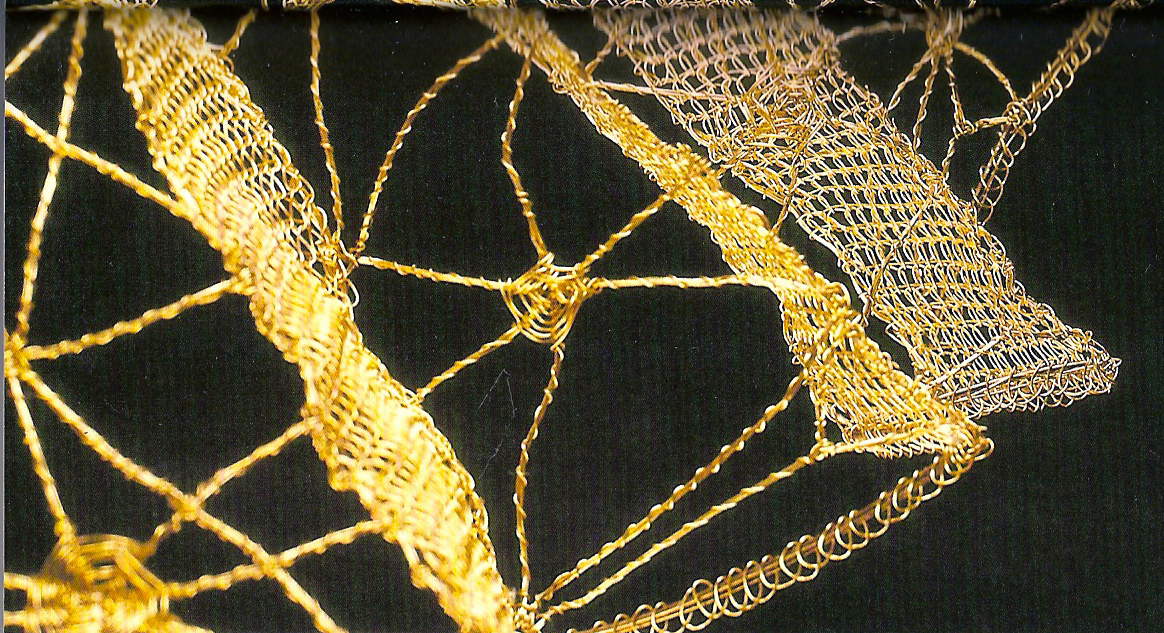
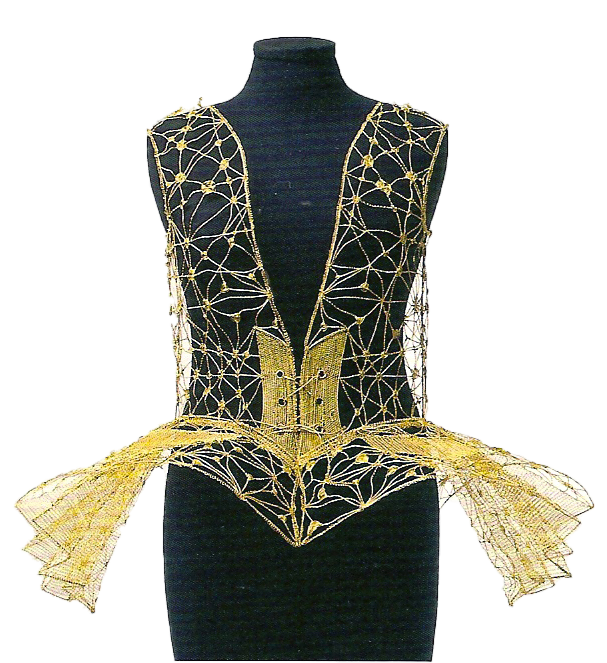
international fashion exhibition, Bruxelles
“Craftsmanship must be supported by local, national and European administrations. Premises made available as it is not possible for the working individuals to support rents, especially here in Venice. The tax system should be revised for artisans…. Allowing them to flourish, and lace should be free port here in Burano. Today nothing is done and I don’t see a bright future! Education should be implemented seriously (there are small courses from associations but at an amateur level. I proposed to create didactic texts… “
Here I focused on a mid-1700s jacket called “peterlè” that I redesigned into a feminine corset with short side flaps designed to be worked with the “spider web” stitch taken from Punto Venezia.
“After my years of study, I committed myself to applying traditional manufacturing techniques to more modern designs because I believe that our lace needs to be stylistically renewed. I am driven by the passion for this unique craft, even if it requires today a lot of sacrifices. Its beauty and preciousness, the desire to express artistic and manual skills push me to show the whole world what my Burano means for the Art Culture Tradition.”
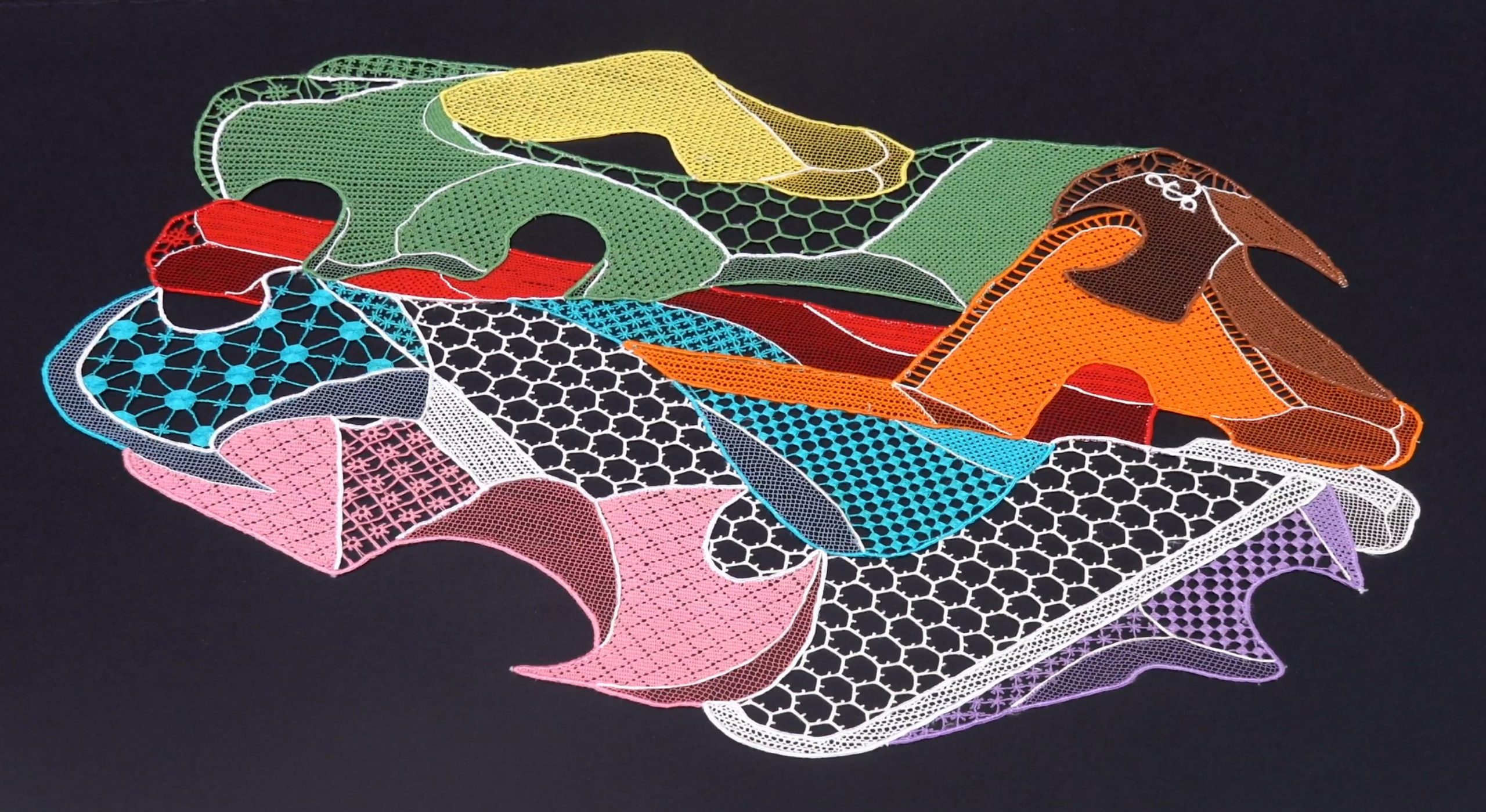
Beijing Design Week – Suzhou Design Week- Shanghai Design Week
Is the lace art destined to disappear? Why?
I believe one of the key points is the change of women’s role in society. Tired of underdeveloped roles, seeking equality and therefore better paid jobs they reorientated. Another key point is certainly the high cost for learning this skilled crafts and the consequent slowness in obtaining results. However, the real cause was the lack of innovative ideas. The artisans forgot that merletto has always been in a permanent evolution with fashion. The decorative motifs handed down for centuries are today mechanically reproduced at far lower costs. This is happening less in the glass or ceramic sector. For some time now, the projects had been entrusted to designers and the execution to excellent craft masters in order to produce luxury objects. Something that had not happened for our lace. It must be considered that while in glass and ceramics an error of evaluation or execution, the waste of material, are contained, for lace making it becomes unsustainable.
There is a real need for a creative push so, I attended drawing courses in the Art Academy. I visited museums with a different eye, buy books and magazines … a whole new world opened up to me. I would like to quote the preface by poet Jacopo Terenzio on the occasion of the first exhibition in Venice:
It has always been aimed at differentiating and dividing art from craftsmanship, often giving rise to commonplaces or questions such as: can craftsmanship border on art? The fact is that more often than we want to admit, a certain type of technique or manual execution modality can be part of the artistic, that is (to better clarify the concept) with the human exaltation of the inventive talent and its expressive capacity in the aesthetic field. For those who love the lagoon and its memory, it will be easier to see in the textures of these laces, the first dawn light, the first spring moon, the continuous water variations, sandbanks and flowers. Of course! Elements sufficiently out of place, difficult to find in this consumerist tide devoid of any profound existential concept. I believe that certain artistic manual skills, certain ways of conceiving existence and the intangible, are destined to disappear even from future collective memory. To those who still perceive the artistic changeability of things, all that remains is to face these rare attempts of safeguarding and recover traditions as true anthropologists.
Noticing the success I continued, also because I risked my time, my effort, a real great sacrifice leading me every time to have more incentives, to carry out research, to throw myself headlong into the work without respite for completing a piece, often months of work. I also impel my students in using new materials and the ancient points on new artefacts. I collaborated with jewellery designers and gold and silver thread offered a even more precious merletto.
In might push the time factor even farther but I get original and personal creations, unique, unparalleled. In addition to stylistic innovation I have introduced polychromy, lace is worked (almost) always with white thread, subsequently experimenting with yarn alternatives up to the creation of conceptual and therefore contemporary lace. Only a great passion can be the engine to support (and bear) so much commitment and sacrifice for this lace, unique in the world for its beauty and preciousness, and the desire to express artistic and manual skills.
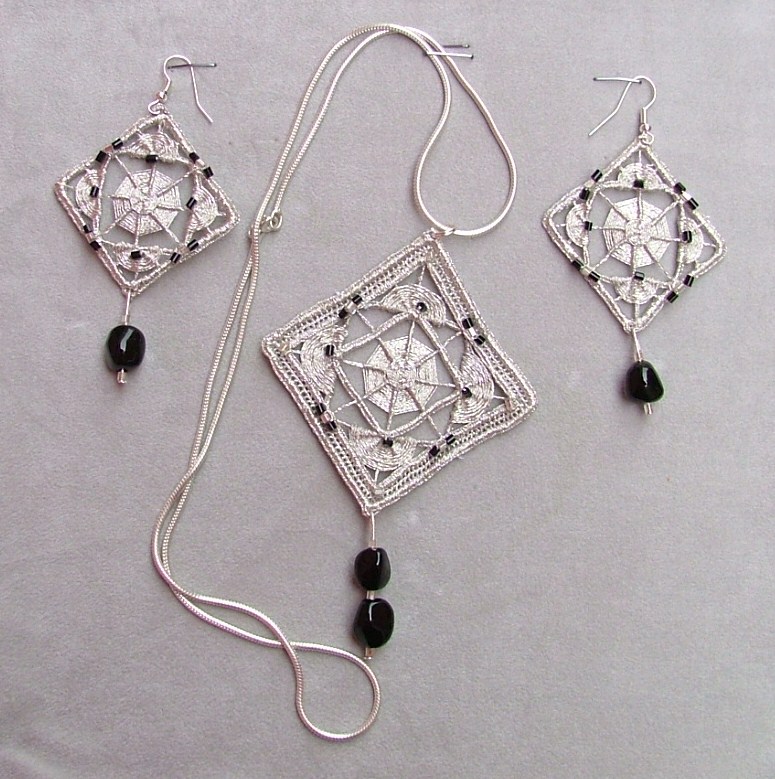
An example would be Kosmicos, isn’t it?
According to Crocian aesthetics it is the very characteristic of art to represent ideas and feelings in their universal resonance. Inspired by aerial views of the lagoon of Venice, with different colors and morphology at every time and tide change, with that six hours breathing rhythm… origin and ending for every living form, endlessly. Metaphor of cosmos and microcosm, in which energies, imploding and exploding in an unlimited succession, determine the unstoppable flow of events, of the existential phenomena.
The theme inevitably led me to use natural materials. Hemp rope, that for my Venice, a seaside city, has numerous meanings: navigation; therefore, discovery of distant lands, fishing trade etc ……… I freely created with the fishermen’s technique, a net with knots “Wolf’s mouth” using the “tabs” (long and narrow tool with internal cuts that allow multiple threads) as if they were large needles.
I made this piece using the ancient points of the Venetian needle lace called reticello. Variations appeared, suggested by the work itself and by the coloured, refined and bright raffia and raw hemp rope, materials chosen for affinity and contrast, however both primitive.
